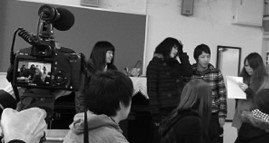Page 9 of 11
Practical Applications of Neuroscience for Educators
![Empowered by brain science, the educator sparks curiosity, connection, and growth—transforming neuroscience into a living classroom experience. [Image: Copilot] Empowered by brain science, the educator sparks curiosity, connection, and growth—transforming neuroscience into a living classroom experience. [Image: Copilot]](/images/Images/neuroscience-for-educators500.png)
For educators, understanding the brain can significantly enhance teaching effectiveness by grounding instructional strategies in neurocognitive principles.
- Jean Piaget’s cognitive development theory, rooted in brain research, advocates for independent exploration, where students construct knowledge through active environmental engagement, reflecting neural plasticity and stage-specific cognitive growth (Piaget, 1970). This process strengthens synaptic connections, particularly in the hippocampus, as learners adapt through assimilation and accommodation.
- Lev Vygotsky’s sociocultural theory complements this by emphasizing guided support from mentors within the Zone of Proximal Development (ZPD), leveraging social interaction to enhance prefrontal cortex development and executive functioning (Vygotsky, 1978).
- Kurt W. Fischer’s dynamic skill theory integrates these approaches, showing that blending self-directed learning with timely mentor support optimizes brain development by aligning new skill introduction with developmental cycles, fostering robust neuroplasticity across the lifespan (Fischer, 2009).
Applying these brain-informed frameworks, educators can implement the following research-based practices:
- Spaced Repetition (Piaget Alignment): Supported by Roediger and Karpicke (2006), this practice, involving spaced reviews, enhances memory retention by reinforcing hippocampal plasticity, aligning with Piaget’s emphasis on independent knowledge construction through repeated engagement.
- Interleaved Practice (Vygotsky Alignment): Backed by Kang (2016), mixing diverse topics during lessons boosts problem-solving and prefrontal cortex flexibility, reflecting Vygotsky’s guided learning within the ZPD to scaffold cognitive challenges.
- Emotional Engagement (Fischer Alignment): Validated by Immordino-Yang and Damasio (2007), using emotionally rich content activates the amygdala and reward systems, supporting Fischer’s focus on optimal developmental timing to motivate and sustain neurocognitive growth.
- Skill Development with Timely Support (Fischer Alignment): Guided by Fischer’s dynamic skill theory (Fischer, 2009), introduce progressively complex skills during optimal developmental stages, pairing students with mentor feedback to enhance neuroplasticity and accelerate cognitive growth through tailored, scaffolded challenges.
- Skill Network Building with Associations (Fischer’s Developmental Web Alignment): Applying Fischer’s developmental web theory (Fischer, 2003), foster skill growth by connecting new competencies (e.g., math) to existing ones (e.g., logic) through collaborative projects, encouraging associations between concepts to mirror brain network expansion as skills branch and integrate into a complex neural framework.
Together, these approaches create a dynamic classroom that nurtures brain development and learner motivation.


![Your brain can keep growing, adapting, and learning at any age, if you are willing to put in the effort [Image: Copilot] Your brain can keep growing, adapting, and learning at any age, if you are willing to put in the effort [Image: Copilot]](/images/Images/best-years-for-adult-brain600.png)


![Your brain can keep growing, adapting, and learning at any age, if you are willing to put in the effort [Image: Copilot]](/images/Images/best-years-for-adult-brain300.png)

